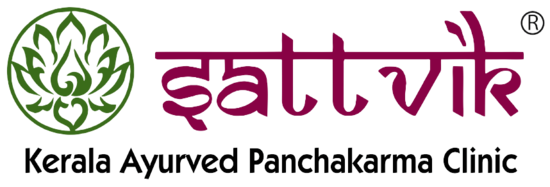AYURVEDIC VAGINAL DOUCHE
What is Ayurvedic Vaginal Douche (Yoni Prakshalanam)?
Ayurvedic Vaginal Douche, also known as Yoni Prakshalanam or Yoni Dhavana, is a traditional Ayurvedic treatment aimed at maintaining vaginal health. It uses herbal decoctions and oils to balance the doshas (Vata, Pitta, and Kapha), treat infections, and support overall reproductive health.
What are the benefits of Ayurvedic Vaginal Douche?
Removes Toxins: Cleanses accumulated toxins (Ama) from the vaginal area and cervix.
Balances Doshas: Helps in balancing aggravated doshas, especially Pitta and Kapha.
Treats Infections: Effective in managing conditions like leucorrhoea, itching, irritation, and infections.
Soothes Irritation: Reduces dryness, itching, and irritation caused by bacterial or fungal infections.
Boosts Reproductive Health: Promotes the health of female reproductive organs and tones vaginal muscles to improve sexual performance.
How is Ayurvedic Vaginal Douche performed at Sattvik?
The process involves several steps:
Step 1: Consultation – A personalized consultation with an Ayurvedic practitioner is conducted to assess your dosha imbalance and recommend the appropriate treatment.
Step 2: Herbal Decoction Preparation – A combination of herbs such as Triphala, Neem, Manjistha, Aloe Vera, Turmeric, and Yastimadhu are boiled to create a lukewarm decoction. Medicinal oils may be added for enhanced benefits.
Step 3: Application Process – The herbal decoction is gently introduced into the vaginal canal using a sterilized applicator. The liquid is allowed to remain for 10-15 minutes.
Step 4: Post-Douche Care – After the treatment, the area is wiped clean, and herbal oils may be applied to support healing. Rest and avoiding physical activity are recommended.
Step 5: Frequency – The treatment is typically done once or twice a week, based on individual health needs.
What herbs are used in the Ayurvedic vaginal douche?
Common herbs include:
Triphala (Amalaki, Bibhitaki, and Haritaki)
Neem (Azadirachta indica)
Manjistha (Rubia cordifolia)
Aloe Vera
Turmeric (Curcuma longa)
Yastimadhu (Glycyrrhiza glabra)
These herbs are known for their therapeutic properties, such as balancing doshas and treating infections.
What precautions should I take before undergoing the treatment?
Pregnancy: This treatment is not recommended during pregnancy.
Active Infections: If you have an active infection, your practitioner will first address the underlying issue before suggesting this treatment.
Allergic Reactions: Always conduct a patch test to ensure you are not allergic to any of the herbal ingredients used.
Are there any aftercare instructions following the treatment?
Diet: A dosha-balancing diet is important to support healing. Foods that soothe Pitta or Kapha doshas are recommended.
Avoid Harsh Chemicals: Do not use synthetic perfumes, harsh soaps, or chemical-based products in the vaginal area.
Clothing: Wear breathable, natural fabrics like cotton to reduce irritation.
How often should I get an Ayurvedic Vaginal Douche?
The frequency of treatment can vary based on your health condition. It is typically done once or twice a week, as recommended by your Ayurvedic practitioner.
Is Ayurvedic Vaginal Douche safe for everyone?

